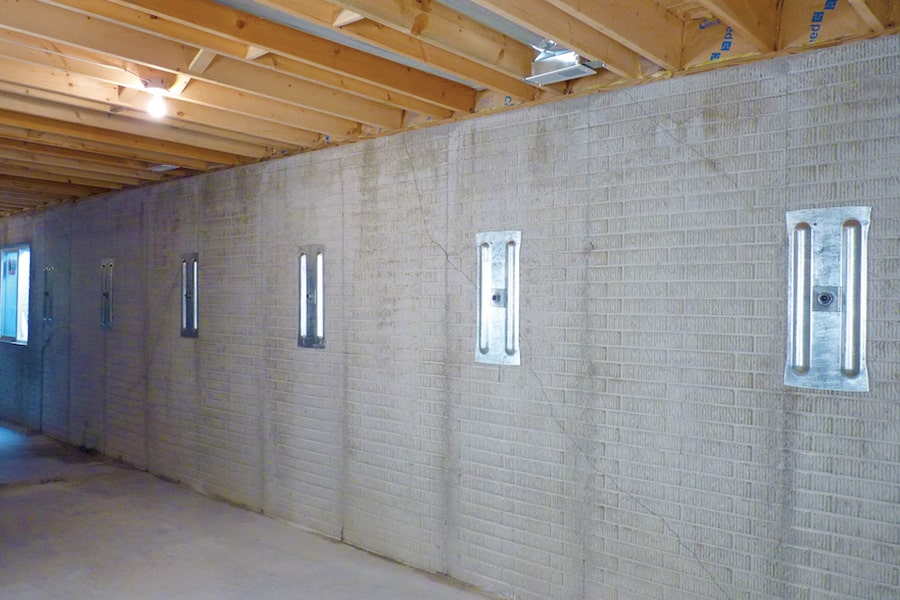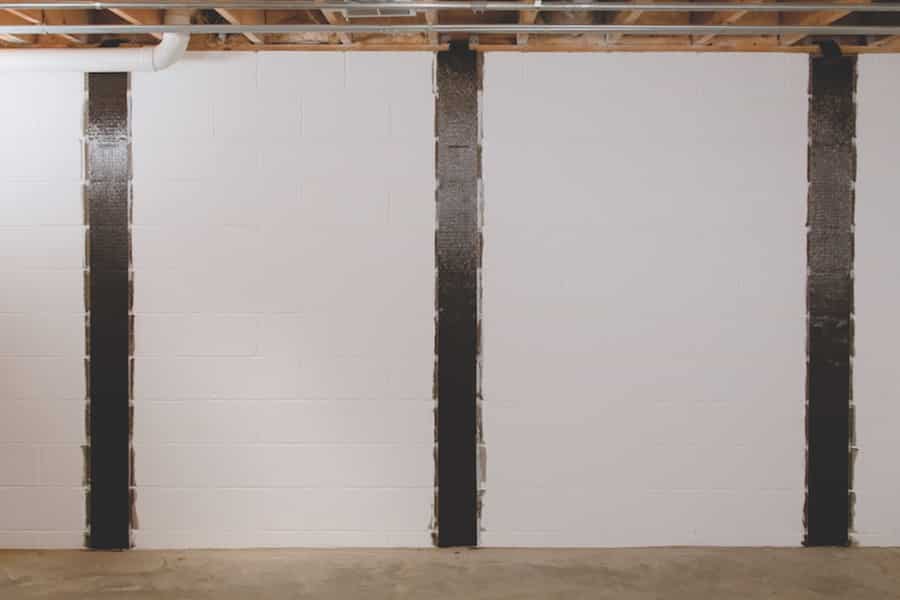Repair Your Bowed Walls
If you notice bowing walls in your home, you could have foundation settlement issues. The severity of bowing walls can vary, but even a slightly bowed wall can put a lot of pressure on your home’s structure and compromise its integrity. It’s best to get your walls inspected right away to get them repaired before they become worse.
Contact our experts at American Foundation & Waterproofing to see why we have become one of the most sought-out companies throughout Tennessee, western North Carolina, and north Georgia. We’ll walk you through the entire process during your free inspection!
What Is a Bowing Foundation Wall?
While you might think a bowing foundation wall is curving outward, the opposite is true. As you stand in your basement, if you notice the wall is bulging or curving towards you, this is called inward deflection.
You will also see cracks forming in a bowing wall due to the stress this causes to the concrete. The cracks can be horizontal or vertical. In some cases, you might see cracks in multiple directions when the bowing becomes more severe. The cracks usually expand in moist or rainy weather.
What Causes a Foundation Wall to Bow?
There are a few reasons your home’s foundation might start to bow. While our solutions will address this problem regardless of the cause, it may help you understand why bowing occurs. If you recognize any of these issues on your property, ask us to provide preventative measures rather than waiting for your foundation walls to bow.
As the soils in the ground shift from changing weather conditions, they can put an immense amount of pressure on your foundation walls. Soils can expand as they become wet and push against your walls, causing them to bow or buckle. As a result, you may notice your walls start to bow, bulge, or even crack in certain spots.

Hydrostatic Pressure
As the soil around your home becomes saturated with rainwater, it becomes heavier and denser. This creates excess pressure against the walls of your foundation. Over time, that pressure will force your walls to bend inwards or bow.
Frozen Soil
Even if it doesn’t snow, the temperatures may drop low enough to cause the soil around your home to freeze. The soil will expand and push against your foundation walls when this happens. This is another way external weather conditions can cause the walls to bow.
Extreme Weight
Your home’s driveway should be located several feet away from the foundation. This is because extreme weight placed on the soil close to your home creates unwanted pressure. Over time, heavy machinery or a parked vehicle can add enough weight to compact and shift the soil. As a result, your foundation walls will start to buckle.
Bowed Wall Repair Solutions
Depending on the severity of your bowing walls, we offer a variety of different solutions that will stabilize your walls and potentially straighten them back to their original position. All of our bowed wall repair products are manufactured Supportworks, one of the top manufacturers in the industry.

GeoLock™ Anchor
GeoLock™ Anchors are heavy-duty anchors made of galvanized steel that are driven deep into the soil behind your bowing wall. Once they reach competent soils to support the weight of your wall, they are connected to steel rods to hold your wall in place.

PowerBrace™
The PowerBrace™ system includes zinc-plated steel beams that are installed against your bowing walls to provide a stable base to support the failing wall. This system can be customized to fit the height of your walls to ensure they are properly supported.

CarbonArmor®
The CarbonArmor® system is typically less invasive compared to the other wall repair solutions. It includes reinforced carbon fiber polymers that are installed into your bowing wall. Its unique design allows it to be durable enough to support the wall and flexible enough to handle any future movement from the earth.

Helical Anchor
Helical anchors are mechanically screwed deep into the soil behind the bowing wall. Once load-bearing soil is reached, the anchor is connected to wall plates to secure the wall into place to prevent any future bowing or tilting.
Rely on American Foundation for Bowed Wall Repair
No matter what condition your walls are in, our experts can diagnose the problem and recommend the best wall repair product for your home’s needs. Contact us today to schedule your free inspection!



